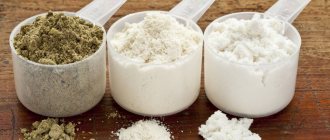Definitions
Sushki are hard ring-shaped bakery products made from wheat dough. They are a Russian national dish. The classic recipe includes flour, water, salt and eggs. On store shelves you can find dryers with various additives: poppy seeds, sesame seeds, vanilla, etc. Previously, the product was prepared as follows: the dough was cut into thin strips, which were twisted into rings, and then immersed in boiling water. The product that floated to the surface was removed from the water and placed in the oven, where it was dried for a certain time. This process determined the name of the product. Today, dryings are no longer boiled in boiling water, but are doused with hot steam.
Drying
Bagels are native Russian bakery products in the shape of a ring, the raw material for the production of which is wheat flour. The first mention of the product in written sources dates back to the 17th century. But there is an assumption that bagels appeared much earlier. Initially, the bakery product was called “ovaranka”, derived from the verb “to scald”. During the gradual transformation of the term, its modern version was fixed in the language. The preparation technology and composition of the bagels are similar to the drying ones, with the only difference being that the former are removed from the oven earlier. Traditionally in Rus', the delicacy was served with tea. At the beginning of the 20th century, in regions where wheat was not grown, bagels were considered an outlandish treat, which was often brought from fairs as gifts for children. At that time, these round pieces were sold strung on twine. Today, bagels are packaged in bags. On sale you can find poppy, sugar, mustard, butter, vanilla and other variations of the product.
Baranki
Drying for morning tea
The craft of bagels came to Russia from Belarus, and in our country Valdai was especially famous for bagels.
Nowadays, in the language of specialists, bagel products are called bread products made from choux pastry in the form of rings of different sizes with a thickness of no more than one and a half centimeters. Bagel products include various types of bagels, dryers and bagels, shaped like a ring or an oval formed by a round strand. Sushki and bagels are shelf-stable bread products. Bagels are baked from dough that is less stiff than bagels. Bagels are larger than bagels, their rings are thicker, and from a technological point of view, bagels are more moist than bagels. Dryers differ from both bagels and bagels in that they have less moisture, they are harder and smaller in size (the thickness of the drying ring can be less than 5 millimeters), they are baked from low-acid and very hard dough with the addition of more sugar - up to 20 percent. Thanks to such differences in a kilogram bag, you will bring from the store either about 20 bagels, or from 25 to 50 bagels, or up to 250 dry goods.
Lamb products are a traditional product of bakeries and bakeries. However, there are several enterprises specializing specifically in the production of bagels - factories of bagel products. Most enterprises have been producing bagels for several decades. Very often, enterprises are equipped with rather outdated equipment, but they have invaluable capital - the technology for making bagels and dryers, recipes and qualified personnel. This allows us to produce bagels of the widest range: plain, vanilla, sugar, butter, vanilla, mustard, poppy, egg, with cumin and many others. All these bagels differ in recipe and taste. In simple bagels there is only 1 percent sugar, in sugar ones - up to 15 percent, and in butter rolls there is less sugar, only 8 percent, but the same amount of fat. They also bake pink bagels, which are colored with carmine or saffron. There are fruit bagels, in which fruit essences and aromatic substances are added to the dough.
Bagels and drying can be produced by about 800 enterprises in all regions of the country - in big cities, in regional centers, and even in rural settlements. However, for one reason or another, not all enterprises regularly produce bagel products. This popular product is not always profitable for the manufacturer, and in modern conditions the management of a bakery is sometimes forced to make a choice between the profitability of the product and the tastes of consumers. And often the financial side of the issue, unfortunately, wins. In fairness, it must be admitted that the quality of manufactured products does not always meet the expectations of customers. Ultimately, it is the buyer who votes with his wallet for or against the products that appear on store shelves.
Last year, almost 420 enterprises produced lamb products. Like other products of everyday demand, bagels cannot be classified as products whose production is highly concentrated. Still, the journey of the steering wheel from the manufacturer to the consumer should be as short as possible. However, one cannot help but notice that there are leaders here too. Half of the total volume of bagels eaten by Russians is produced by 30 large enterprises in the bakery industry. This means that only 7 percent of enterprises actually produced bagels last year, or less than 4 percent of bakery enterprises.
Despite the fact that only bagels produce approximately half of the total number of enterprises that could do this, the volume of production of bagel products is increasing. Over the past 3 years, the production of bagels has increased annually by 5-8 percent, and last year almost 100 thousand tons of bagels arrived on retail shelves.
Depending on which region and which store shelves the bagels will be supplied to, they can be sent for sale in small wholesale containers or packaged in consumer packaging. In rural areas, towns and small towns, buyers prefer weighted bagels, since they often buy them by the kilogram or more, and they don’t really want to spend money on beautiful packaging of half-kilogram packs - the incomes of Russians in the outback are not the same. But in cities, especially with developed hawker trade, it is impossible to do without packaged products. When packaged, the product flows better and hygienic requirements are met. In large cities, where buyers have the opportunity to choose from the widest possible range of similar products from different manufacturers, bright, attractive, and sometimes branded packaging of bagels is simply necessary, because it actively influences the choice and preference of buyers. Of course, not all bakeries can afford the costs of purchasing packaging lines and consumables. And these costs are not always justified, especially if the company is focused on the local market.
Comparison
First, let's compare baked goods by size. As a rule, bagels are several times larger than dryers. The diameter of the latter is only 2-4 cm. Accordingly, the thickness of their ring is an order of magnitude smaller. The diameter of the bagels can reach up to 8 cm. They are much thicker and more magnificent than their small counterparts. If in a kilogram bag of bagels you can count about 25 products, then in the case of dryers there will be about 100. The difference is obvious.
Another difference between sushki and bagels is the duration of their preparation. The latter are removed from the oven a little earlier, so they turn out softer and moister. The water content in them is 14-17%. The shelf life of this product is not too long (25 days). The dryers stay in the oven for a longer time, due to which they become hard and crispy. They contain from 8.5 to 12% water. The products are sometimes called “canned bread”, which is explained by their considerable shelf life. The product can be eaten for 45 days.
Let's summarize what is the difference between dryers and bagels.
| Drying | Baranki |
| Diameter is 2-4 cm | Diameter can reach up to 8 cm |
| Modest ring thickness | Much more magnificent |
| Spend a lot of time in the oven | Removed from oven earlier |
| Comes out firm and crispy | Softer product |
| Water content ranges from 8.5 to 12% | Contains up to 17% moisture |
| Shelf life is 45 days | Usable for 25 days |
What do bagel, bagel and drying have in common?
You don't need to be an expert to identify a common feature among these three bread products - a rope of dough twisted into a ring.
But, oddly enough, this did not in any way affect the appearance of names, which are based not on external similarity, but on manufacturing technology. It must be said that in terms of the composition of the products necessary for the production of lamb products, they are all absolutely similar. Classic bagels are made from flour, salt and yeast, but the main secret lies in their preliminary scalding. Only after dipping the bagels into boiling water or milk do they go into the oven. The scalding time depends on how quickly the bagels float to the surface. Usually this happens within 15-20 seconds. Therefore, initially the bagels were called obvarenki, obvaranka, abaranka (“obarinok” in Ukrainian) and eventually transformed into what is familiar today – bagel.
In making bagels today, boiling water is not used, they are simply doused with hot steam, but the name remains the same. Due to their ability to be stored for a long time, dried bread is sometimes called canned bread, because they are the same bagels, but only thin and heavily dried. This is exactly the definition that can be found in Dahl’s dictionary. For the first time, the name of the small bagel, “sushka,” was recorded in writing as a dialect of the Voronezh province in 1858, but gradually it took its place in the literary language. Although in the Pskov and Novgorod provinces for a long time a small dry bagel, 2-4 cm in diameter, was called a lamb.
Crackers: benefits and contraindications
No one knows when they began to use crackers for food, perhaps since the time bread appeared. However, if bread tends to quickly become stale and moldy, then crackers, due to their low humidity (8-14%), can be stored for a long time. It is no coincidence that they, like bagels and dryers, are called canned bread.
The raw material for the production of crackers is a special dough, with a HIGH sugar content, unlike bread, which makes them crispy and crispy. So the opinion that crackers are made from stale loaves is erroneous.
By the way, rusk translated from Latin means twice baked. That is, the loaves are baked for the first time, and then they are cut into crackers and dried again in special ovens.
Health benefits of crackers:
- Long shelf life of the product.
- These products are lower in calories than their neighbors in the shop: buns, gingerbreads, cookies, and even more so cream cakes.
- Despite some caloric content and sugar content, crackers are recommended to be used even in baby food due to their good digestibility and digestibility;
- Rusks are rich in fiber, they contain microelements necessary for the body such as potassium, calcium, iron, phosphorus, sodium, and magnesium, B vitamins;
- They contain virtually no fat and are free of preservatives.
- They are used for poisoning and in the postoperative period due to the fact that they do not cause fermentation in the intestines and flatulence.
- They can be used for diet and during religious fasting, since they do not contain eggs, milk and a minimum percentage of vegetable oil.
Harm of crackers
- High calorie content plus easy digestibility, because crackers are easy to eat, like seeds - unnoticed;
- Crackers have a fairly high glycemic index and help increase appetite;
- You should not overuse crackers and dried products on an empty stomach, which can lead to constipation;
- Beer crackers with the addition of salt, food additives - taste enhancers, preservatives and dyes are recognized as a harmful product. Their consumption leads to diseases of the stomach, intestines, urinary system and inflammatory processes. Such crackers are especially harmful to children's health.
How useful are bagels, dryers and bagels: studying the history of the issue
Sushi, bagels and pretzels - subconsciously it seems that this flour product is not so harmful. There is no special fat in them, no sugar. But is it really worth eating?
It turns out that our premonitions did not deceive us. And, like many dishes from old cuisine, their benefits are very questionable.
Lamb products are a long-standing and favorite genre of Russians. And not only them. Journalists from the program “Living Food” (NTV) and its presenter Sergei Malozemov decided to sort out this entire assortment. And they asked me and other experts to tell us why we love all this.
“In the 19th century, there were more than 40 types of bagels,” says the tour guide of the Dessert Museum, Anastasia Konstantinova. — It’s relatively not difficult to prepare them. Flour, sugar, salt, a little vegetable oil, sourdough or yeast. Men usually kneaded the dry dough. They were called rubers. The size of the steering wheel could vary: from the one we are used to, which fits in the palm of our hand, to a steering wheel the size of a polisher’s elbow. These were huge products weighing up to 1.5-2 kilograms.
© p-syutkin.livejournal.com
Having simply rolled the dough into flagella, they were boiled in hot water. Hence the name “steering wheels”. Previously, it sounded like “screwed.” This is done in order to stop the growth of yeast, maintain shape and give the finished baked goods a crispy, glossy crust. They could boil not only in water, but also in meat or fish broth. It was an easy option. And expensive spices and essential oils were sometimes added to merchant versions.
Here, let's say, bagels baked in a Russian oven with sugar and cinnamon sprinkling.
© p-syutkin.livejournal.com
In modern factories the technology is very similar, except that the range is much smaller. And so - everything is the same: kneading, proofing, molding... The scalding process has been improved. Dryers, for example, are doused with steam in a special apparatus and then baked. The familiar “shuttle” drying has a glossy surface, a beautiful even crust and a golden color.
© p-syutkin.livejournal.com
As they say at the Moscow Research Institute of the Baking Industry, the production of lamb products is very conservative. Technologies have not changed for decades. So even among cheap varieties it is difficult to find bad drying or bagel.
It is known that dryers must be fragile. And when broken, they should be divided into equal pieces. Baked according to the classic recipe, it is broken into 4 pieces. Others may crumble smaller.
© p-syutkin.livejournal.com
It should be noted that they eat something similar to bagels in other countries. For example, the version from Germany is world famous. Everyone in Russia knows the German word “sandwich”. But the funny fact is that the Germans themselves much more often have breakfast not with sandwiches, but with these pretzels - pretzels.
There is even a pretzel museum in the suburbs of Stuttgart. They say that the first mention of this product dates back to 1050. It's no surprise that local bakers have adopted the pretzel as their symbol. According to one version, the monks came up with the intricate shape for the dough by folding the dough the way they usually fold their hands for prayer.
© p-syutkin.livejournal.com
In different German states it is customary to prepare their own pretzels. They differ in the types of flour - premium wheat or whole grain. And color. To give the pretzel an appetizing brown hue, it can be dipped in a soda solution before baking. Pretzels today are prepared in the form of small salted pretzels (like our dryers). But more often they make them soft and rich - this is just an option for breakfast. A relative of our bagel or American bagel.
By the way, the bagel was once invented in Poland, but it became widespread in the United States, arriving there at the beginning of the 20th century along with immigrants.
© p-syutkin.livejournal.com
“A dish that seemed completely alien to America,” says historian Pavel Syutkin, “coming from Polish, Jewish culinary culture, suddenly turned almost into an American national treasure.” When many families in New York start their day with this bagel with cheese or salmon.
Bagels are now actively offered in Russian cafes and bakeries. Can such a breakfast be considered healthier than a regular sandwich? Nutritionist Anna Chaikina says that replacing simple bread with a trendy bagel essentially does not change anything. Even in such a miniature version there are already more than 300 kilocalories.
© p-syutkin.livejournal.com
But this with cottage cheese and salmon is not the worst option. But regarding conventional drying, the doctor is more categorical. This is because they are made from premium wheat flour, which instantly turns into sugar in the body. But this does not add health. The main danger is that drying is like seeds - it is very difficult to stop. Their salt content is also high. In general, it’s difficult to call bagels and sushi healthy food. But sometimes, little by little, for variety - why not?











